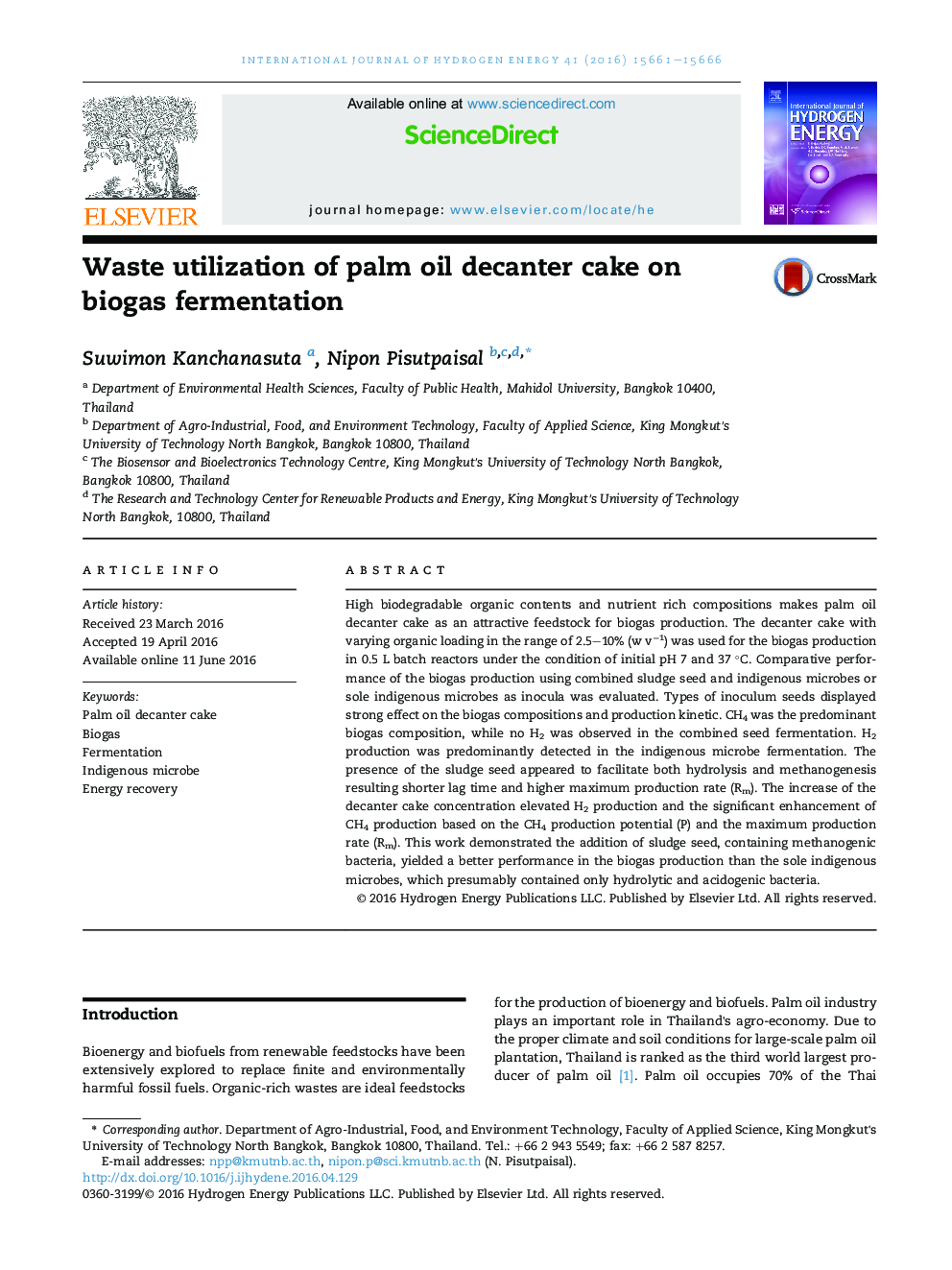| Article ID | Journal | Published Year | Pages | File Type |
|---|---|---|---|---|
| 1270286 | International Journal of Hydrogen Energy | 2016 | 6 Pages |
High biodegradable organic contents and nutrient rich compositions makes palm oil decanter cake as an attractive feedstock for biogas production. The decanter cake with varying organic loading in the range of 2.5–10% (w v−1) was used for the biogas production in 0.5 L batch reactors under the condition of initial pH 7 and 37 °C. Comparative performance of the biogas production using combined sludge seed and indigenous microbes or sole indigenous microbes as inocula was evaluated. Types of inoculum seeds displayed strong effect on the biogas compositions and production kinetic. CH4 was the predominant biogas composition, while no H2 was observed in the combined seed fermentation. H2 production was predominantly detected in the indigenous microbe fermentation. The presence of the sludge seed appeared to facilitate both hydrolysis and methanogenesis resulting shorter lag time and higher maximum production rate (Rm). The increase of the decanter cake concentration elevated H2 production and the significant enhancement of CH4 production based on the CH4 production potential (P) and the maximum production rate (Rm). This work demonstrated the addition of sludge seed, containing methanogenic bacteria, yielded a better performance in the biogas production than the sole indigenous microbes, which presumably contained only hydrolytic and acidogenic bacteria.
